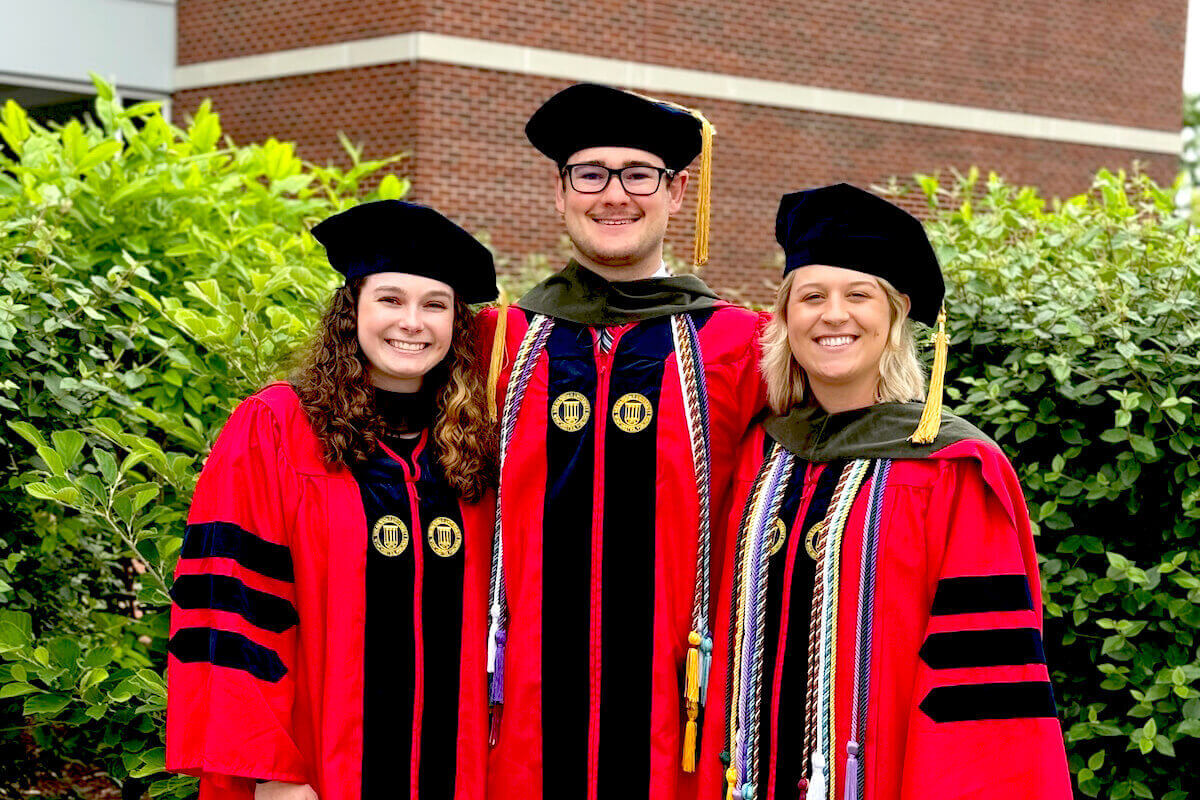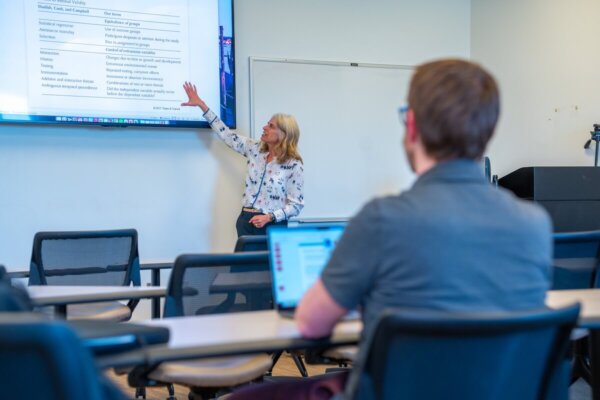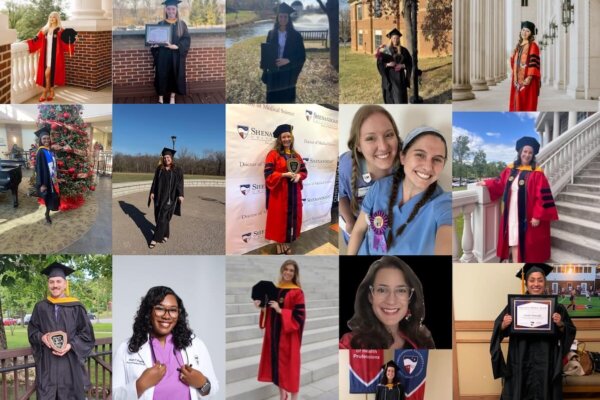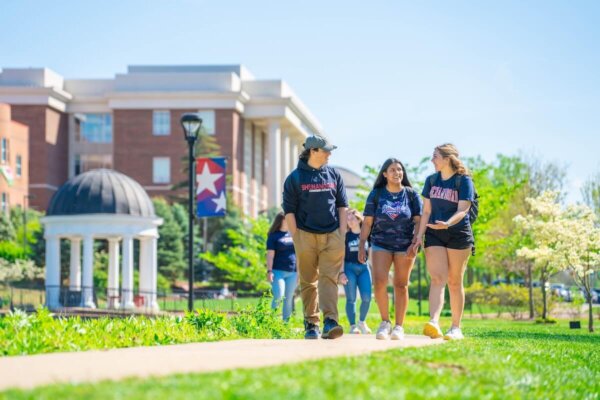SCiL Completes Wilton House VR Project
Virtual recreation of historic Virginia plantation is now part of the visitor experience at the Wilton House Museum
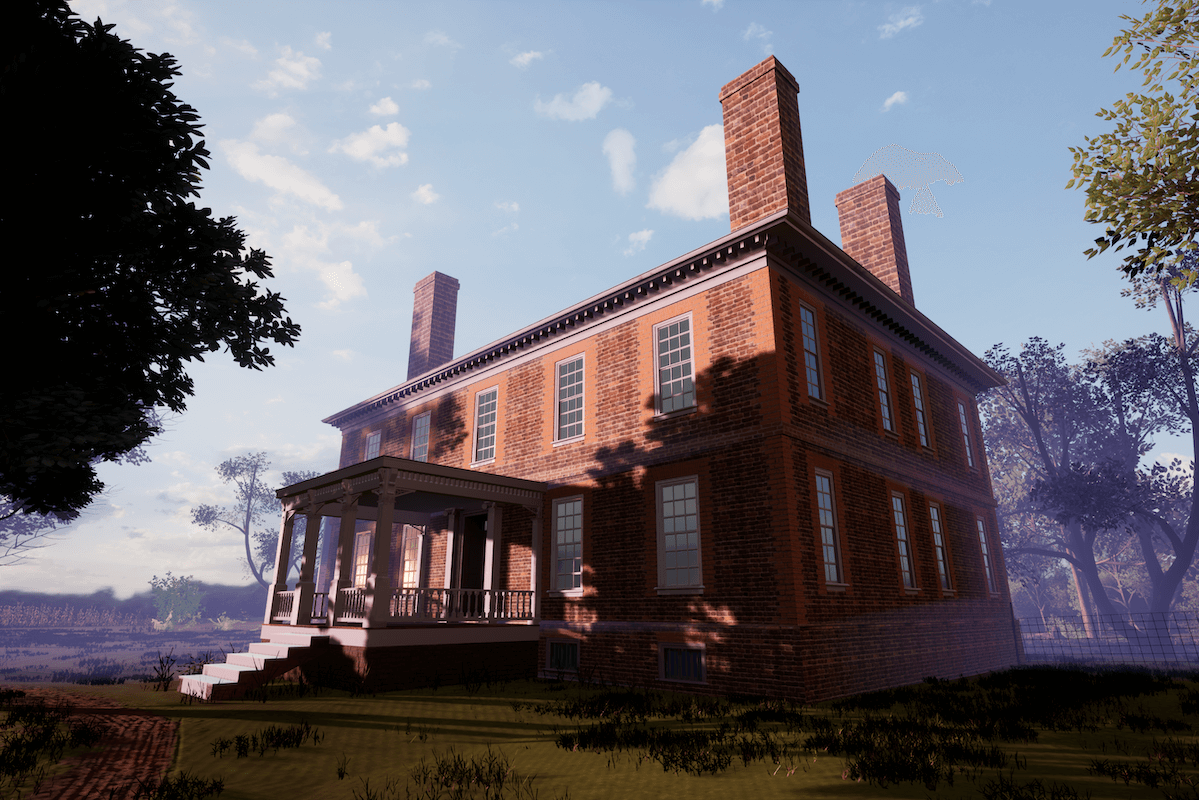
A trip to the Wilton House Museum in Richmond, Virginia, allows visitors to see the historic home as it would’ve looked hundreds of years ago, decked out in 18th- and 19th-century furnishings that were commonplace in wealthy plantation homes of the time. To truly journey back in time and get a fuller picture of the home, museum visitors need only to put on a virtual reality headset.
“Wilton House VR,” a virtual recreation of the Virginia tobacco plantation developed by the Shenandoah Center for Immersive Learning (SCiL) at Shenandoah University, is now officially part of the visitor experience at the Wilton House Museum and allows users to explore the sprawling plantation as it existed during two time periods: 1785 and 1930.
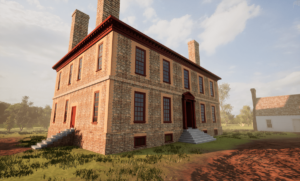
This VR experience is the only way to visit the Wilton home on its original 2,000-acre property that overlooked the James River in Henrico County. The home, which was constructed for the prominent Randolph family in the 1750s and hosted some of colonial Virginia’s elite political figures, was relocated in the 1930s to a small plot of land in Richmond approximately 15 miles west of its original location.
It was because of Wilton’s special circumstances that Dr. Joseph Rizzo, executive director of the Wilton House Museum, sought to partner with SCiL to come up with an innovative way to better tell the home’s full history. Led by Nathan Prestopnik, Ph.D., co-director of SCiL and director of Shenandoah’s Bachelor of Arts in virtual reality design, a team of SU staff and students brought the former plantation to life in a way only possible in VR.
The team began by virtually reconstructing the plantation as it would’ve looked in 1785, building an expansive virtual setting featuring outbuildings, living quarters for the more than 100 enslaved people who lived on the plantation, tobacco fields, and the landing site and dock on the James River’s north bank. This phase of “Wilton House VR” was delivered to the museum last winter.
A second phase that portrays the plantation as it looked just before the Wilton home was moved in the 1930s became available to Wilton House Museum visitors in June 2024.
When visitors tour Wilton, they see this beautiful home within a residential neighborhood in the west end of Richmond, and understanding what the site was in terms of a working plantation, thousands of acres of land and other buildings, could sometimes be a bit difficult for the visitors to understand. And in terms of the questions they asked, a lot of their intrigue was on the relocation of the site, what the original property was like.
We’re thrilled with the product. We love that we were able to work on this project with students from Virginia, and it’s a project that I think will continue to age well in the future. Hopefully, it can be a leading example for what historic sites and what technology can do to make history relevant and interesting to a new generation of museum goers.”
Dr. Joseph Rizzo, executive director of the Wilton House Museum
To ensure historical accuracy when recreating the Wilton home and plantation, the development team visited the Wilton House Museum and the home’s original property, performing drone videography, 3D scanning, photography, and 360-degree imagery, and used tax records, blueprints, topographical maps and other historical documents provided by Rizzo and his team to guide the virtual reconstruction of the property.
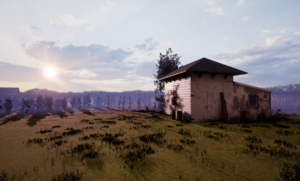 For the 1930s version, the design team used photographs from the era to reconstruct the main house, outbuildings, and environment. At that time, the Wilton home had fallen into disrepair, so the property in this version is more wooded and structures have a worn, lived-in look, different from the more-cultivated appearance in the 1780s. The main house also underwent significant architectural changes by the 1930s, including a large addition to the southern side of the home.
For the 1930s version, the design team used photographs from the era to reconstruct the main house, outbuildings, and environment. At that time, the Wilton home had fallen into disrepair, so the property in this version is more wooded and structures have a worn, lived-in look, different from the more-cultivated appearance in the 1780s. The main house also underwent significant architectural changes by the 1930s, including a large addition to the southern side of the home.
“The Wilton House VR production was truly a team effort, and it was amazing to see our students rise to the challenge of designing and developing this extremely complex historical recreation,” said Dr. Prestopnik. “From conducting historical research to making sophisticated 3D models, to crafting an impressive spatialized sound design, they not only learned about the technical and artistic intricacies of their craft, but also what it means to work like a professional, with other professionals, on a significant software engineering effort.”
Wes Brown, immersive technology specialist at Shenandoah, was the lead developer on the project, focusing on performance optimization and the overall functionality of the experience. Brown also played a critical role guiding SCiL’s team of student designers and developers.
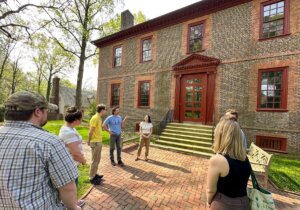
Those students included virtual reality design students Tyler Dossat ’25 and Joey Miciotta ’25, who led the 3D modeling and design effort for the project. They were assisted by fellow VR student Ethan Swope ’25, who developed additional 3D models. Johnny Bernard ’23 created the spatialized sound design and provided voiceovers for the various points of interest that users can visit on the virtual property with help from fellow collaborative audio arts student Valentino Colella ’26. VR design students Ann Fink ’25 and Luke Yager ’25, along with SCiL staff members, assisted with reference data collection during the visits to Richmond, which included photography and drone videography led by SCiL Immersive Media Specialist Lee Graff, M.Ed.
“I really enjoyed being a part of the team for Wilton House,” Dossat said. “I learned so much in such a short time. The project gave me the opportunity to get hands-on experience that will really help me in my future job search.”
The finished Wilton House VR production was handed off to the Wilton House Museum in June 2024, and marks a significant success story for SCiL. The undergraduate students involved gained significant real-world experience working on a fast-paced, professional software development effort that took just one year to complete.

